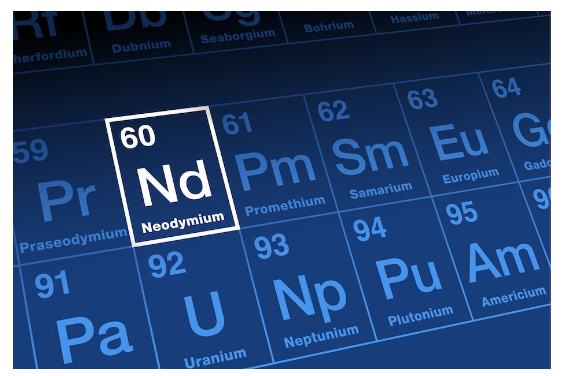Thursday, 28th December 2023
Advancements in the Efforts to Eliminate Child Marriage
In News: A recent study in 'The Lancet Global Health' reveals progress and challenges in addressing child marriage in India.
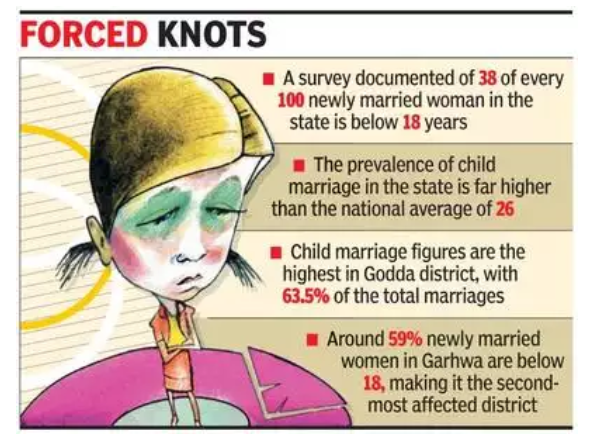
Major Trends Revealed by the Study
- Status in India
- Child marriages involving girls dropped from 49% in 1993 to 22% in 2021, while boy child marriages decreased from 7% in 2006 to 2% in 2021, indicating a nationwide decline.
- However, progress stagnated between 2016 and 2021, with certain states witnessing an alarming increase in child marriages.
- Notably, six states, including Manipur, Punjab, Tripura, and West Bengal, saw a rise in girl child marriages, while eight states, including Chhattisgarh, Goa, Manipur, and Punjab, observed an increase in boy child marriages.
- Global Trends
- Globally, there has been notable progress against child marriage, but the Covid-19 pandemic poses a threat, putting around 10 million more girls at risk of child marriage over a decade.
Major Factors Linked to Child Marriage
- Economic Factors
- Families in poverty may view marriage as a means to reduce economic burden by transferring responsibility for the girl to her husband's family.
- Dowry traditions in some regions can influence early marriages to avoid higher dowry costs later.
- Economic hardships in areas prone to natural disasters might lead families to opt for early marriage as a coping mechanism.
- Social Norms and Traditional Practices
- Long-standing customs prioritize early marriage, perpetuating the practice.
- Pressure from the community or family to conform to these norms leads to early marriages, especially for girls.
- Gender Inequality and Discrimination
- Unequal power dynamics and limited agency for girls contribute significantly to early marriage.
- Lack of access to education pushes families to opt for early marriages, viewing it as a way to secure their daughters' futures.
Legislative Framework and Initiatives on Child Marriage in India
- Legislative Framework
- The Prohibition of Child Marriage Act (2006) set the legal age for marriage at 21 for men and 18 for women.
- Section 16 allows State Governments to appoint 'Child Marriage Prohibition Officers (CMPO)' responsible for preventing child marriages and raising awareness.
- Related Initiatives
- The Dhanalakshmi Scheme, a conditional cash transfer scheme with insurance coverage, aims to eliminate child marriage.
- Schemes like Beti Bachao Beti Padhao (BBBP) also work to empower girls through education and discourage child marriage.
Way Forward
- Economic Empowerment Initiatives
- Offer vocational training and entrepreneurship opportunities to girls at risk, providing alternatives to early marriage.
- Facilitate access to microloans for families to reduce financial pressure.
- Community Engagement through Art and Media
- Organize art-based workshops, theater performances, or community storytelling sessions to educate on the consequences of child marriage.
- Collaborate with local artists and influencers for impactful campaigns.
- Peer Education and Mentorship Programs
- Train young leaders as advocates against child marriage, empowering them to educate and mentor peers within their communities.
- Introduce comprehensive education modules in schools to foster discussions and awareness among students.
|
UPSC Previous Year Questions Mains (2016) Q. Examine the main provisions of the National Child Policy and throw light on the status of its implementation. |
Source: ET
Systems for Sanitation - Edukemy Current Affairs
In News: Effluent water directed towards the ground, open spaces, open drains, or canals should be guided into appropriate sanitation systems to safeguard public health and preserve the environment.
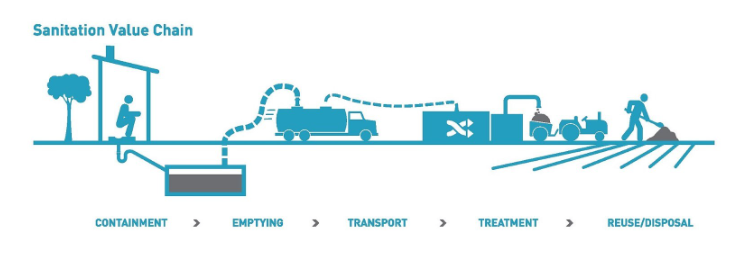
Types of Sanitation Systems
- On-site Sanitation Systems (OSS)
- In rural or spacious urban settings, prevalent OSS includes twin pits, septic tanks, bio-digester toilets, bio-tanks, and urine diversion dry toilets.
- These systems passively treat used water, accommodating varying spatial constraints.
- Twin Pits and Septic Tanks
- Twin Pits Functionality
- Comprising two pits used alternately, twin pits enable liquid soaking into the ground while solids settle and degrade.
- One pit remains inactive for two years, ensuring pathogen-free contents for reuse, although unsuitable for rocky soils.
- Septic Tanks Operation
- Watertight septic tanks allow used water to flow through, with solids settling at the bottom and scum, mainly oil and grease, floating to the top.
- While settled solids degrade over time, accumulated faecal sludge and scum require removal at regular intervals using trucks equipped with vacuum pumps, transporting them to Faecal Sludge Treatment Plants (FSTPs).
- Twin Pits Functionality
- Urban Sewer Systems
- In densely populated urban areas lacking space on properties, an underground network of pipes, known as sewers, collects and conveys used water to treatment facilities.
- This network transports sewage from toilets, bathrooms, and kitchens to Sewage Treatment Plants (STPs) using gravity or pumps, with machine-holes for maintenance and blockage removal.
Functions of Treatment Facilities
- Faecal Sludge Treatment Plants (FSTPs)
- Varieties of FSTPs
- Operating in mechanical or gravity-based systems, FSTPs manage faecal sludge, emphasizing effective containment, conveyance, and treatment (faecal sludge management or FSM).
- In smaller towns or villages, OSS-FSM prevails.
- Reuse and Disposal
- Treated solids from FSTPs, composted with organic municipal waste, become reusable in agriculture.
- Treated water is commonly repurposed for landscaping within FSTP premises.
- Varieties of FSTPs
- Sewage Treatment Plants (STPs)
- Comprehensive Water Treatment
- STPs utilize physical, biological, and chemical processes to eliminate pollutants from used water.
- Similar to FSTPs, the primary stage separates solids, followed by purification through microorganisms, and eventual disinfection.
- Advanced Techniques and Varied Types
- Advanced STPs incorporate methods like membrane filtration for enhanced water reuse.
- Facilities come in mechanized and non-mechanized types based on city administrations' technical and financial capacities.
- Comprehensive Water Treatment
Need for Such a Complex Sanitation System
- As water accumulates impurities through domestic and non-domestic uses, including natural and human-introduced substances, it's crucial to contain, remove, and treat used water before disposal or reuse.
- This ensures that reintroduced water doesn't pollute natural environments, safeguarding public health from impurities like organic matter, pathogens, and heavy metals.
Conclusion
Despite significant improvements in public health, achieving universal access to safely managed sanitation services remains a challenge. Addressing issues like poorly designed systems and unsafe operation practices is crucial to effectively manage used water and protect water bodies and groundwater aquifers.
Source: TH
Press and Registration of Periodicals Bill, 2023
In News: The Lok Sabha recently approved the Press and Registration of Periodicals Bill, 2023, abolishing the outdated Press and Registration of Books Act, 1867
Key Features of Press and Registration of Periodicals Bill, 2023
- Registration of Periodicals
- The legislation facilitates the registration of periodicals, encompassing publications featuring public news or commentary on public events.
- Exclusion of Books
- Books and scientific/academic journals are excluded from the definition of periodicals.
- Registration Protocols for Publications
- Periodical publishers can now register online through the Press Registrar General and designated local authorities.
- Restrictions on Individuals
- Individuals convicted of terrorism or offenses against state security are barred from publishing periodicals.
- Foreign Periodicals
- Approval from the central government is required for reproducing foreign periodicals in India, with detailed registration protocols.
- Press Registrar General
- The legislation establishes the position of the Press Registrar General, tasked with issuing registration certificates for all periodicals.
- Printing Press Registration
- Declarations related to printing presses can now be submitted online to the Press Registrar General, replacing the previous practice of declarations before the District Magistrate.
- Suspension and Cancellation of Registration
- The Press Registrar General has the power to suspend a periodical's registration for at least 30 days (extendable up to 180 days) for various reasons.
- Penalties and Appeals
- The legislation grants authority to the Press Registrar General to impose penalties for unregistered periodical publication or non-compliance with annual statement timelines.
- Appeals Process
- The legislation provides for appeals against denied registration certificates, suspension/cancellation of registration, or imposed penalties, allowing a 60-day period for filing appeals before the Press and Registration Appellate Board.
Source: PIB
Unravelling Good Governance - Edukemy Current Affairs
In News: India observed Good Governance Day on December 25th, coinciding with the birth anniversary of the former Prime Minister Atal Bihari Vajpayee.

What is Good Governance?
- About
- Governance refers to the processes, systems, and structures directing, controlling, and managing organizations, societies, or groups.
- Definition of Good Governance
- Good governance is characterized by a set of values guiding public institutions in conducting public affairs and managing resources, respecting human rights, the rule of law, and societal needs.
- World Bank's Perspective
- The World Bank defines good governance in terms of the traditions and institutions exercising authority in a country. This includes the selection, monitoring, and replacement of governments, government capacity for policy formulation and implementation, and the mutual respect of citizens and the state for governing institutions.
Worldwide Governance Indicators
The World Bank's Worldwide Governance Indicators project assesses over 200 countries based on six fundamental measures of governance, including Voice and Accountability, Political Stability and Absence of Violence, Government Effectiveness, Regulatory Quality, Rule of Law, and Control of Corruption.
Major Issues Related to Governance in India
- Corruption and Bureaucratic Inefficiency
- India ranked 85th in the Corruption Perception Index 2022, indicating concerns about bribery and misuse of public funds.
- Inequality and Social Exclusion
- Despite economic growth, wealth disparities persist, with the richest 1% holding over 40% of India's wealth.
- Ineffective Implementation of Policies and Schemes
- Government programs often suffer from poor execution, as seen in irregularities in the Ayushman Bharat Scheme.
- Inadequate Judicial Infrastructure
- Over 80,000 pending cases in the Supreme Court in 2023 highlight delays in access to justice.
- Environmental Degradation and Climate Change
- India faces challenges like air pollution, water scarcity, and deforestation, as indicated by the 2023 World Air Quality Report.
- Political Polarization and Weakening Accountability
- Increasing partisanship sometimes overshadows long-term policy planning and public welfare.
Major Initiatives Related to Good Governance in India
- Transparency and Accountability
- Right to Information Act (2005)
- Empowers citizens to access government information, promoting transparency.
- Central Public Grievance Redress and Monitoring System (CPGRAMS)
- Online platform for registering and tracking grievances against government departments.
- E-Governance Initiatives
- Digitization of government services for increased efficiency and reduced human interaction.
- Right to Information Act (2005)
- Citizen Participation and Empowerment
- MyGov platform
- Enables citizen participation in policy discussions and feedback to the government.
- Gram Sabhas
- Village-level meetings for participatory decision-making.
- Right to Education Act (2009)
- Ensures free and compulsory education for children aged 6-14, empowering communities.
- MyGov platform
- Decentralization and Local Governance
- 73rd and 74th Constitutional Amendments
- Empower Panchayats and Municipalities for local democracy.
- Aspirational Districts Program
- Focuses on improving socio-economic indicators in disadvantaged districts.
- Smart Cities Mission
- Develops cities with infrastructure and technology solutions.
- 73rd and 74th Constitutional Amendments
- Other Initiatives
- Digital India Programme
- Aims to transform India into a digitally empowered society.
- Direct Benefit Transfers
- Transfers subsidies directly to beneficiaries, reducing corruption.
- Aadhaar card
- Unique identification system promoting financial inclusion.
- Insolvency and Bankruptcy Code (2016)
- Streamlines resolving bad debt and facilitating business revival.
- Unified Payments Interface (UPI)
- Enables seamless inter-bank transactions using a single mobile app.
- Digital India Programme
Way Forward
- JanData Platform
- Create a secure data platform backed by blockchain technology for personalized services and citizen participation.
- Reforming Bureaucracy
- Streamline administrative processes, reduce red tape, and enhance professionalism and accountability.
- Fast-track Judicial Reforms
- Address the backlog of cases, improve court infrastructure, and ensure speedy access to justice.
- AI-powered Grievance Redressal
- Develop an AI-driven system for swift complaint resolution.
- Reimagining Citizen Engagement
- Establish community-based innovation labs for local problem-solving.
- Futuristic Education Curriculum
- Integrate critical skills into the education system for active participation in governance.
Conclusion
India should follow the principle of "Minimum Government, Maximum Governance" aligned with Sustainable Development Goal (SDG) 16: Peace, Justice, and Strong Institutions.
|
UPSC Previous Year Questions Mains (2016) Q. Effectiveness of the government system at various levels and people’s participation in the governance system are interdependent". Discuss their relationship in the context of India. Q. What do you understand by the terms ‘governance’, ‘good governance’ and ‘ethical governance’? |
Source: IE
Disputed Persian Gulf Islands - Edukemy Current Affairs
In News: Iran and the UAE tensions rise as a joint statement at the Arab-Russian Cooperation Forum disputes Iran's claims to three islands in the Persian Gulf
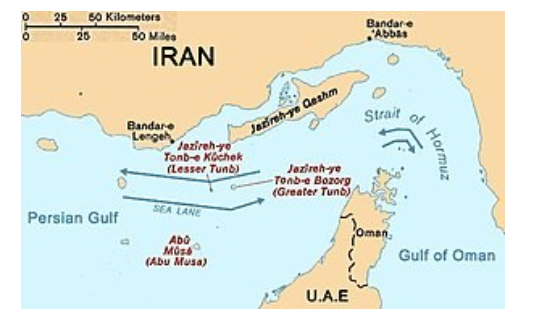
The Persian Gulf islands dispute
- The Persian Gulf islands dispute involves Greater Tunb, Lesser Tunb, and Abu Musa.
- Iran claims historical ownership, occupying them in 1971, considering them integral to its territory.
- Iran asserts an agreement with Sharjah for Abu Musa.
- The UAE, disputing ownership, claims Ras al-Khaimah's rights and accuses Iran of seizing islands before the 1971 Emirati Federation formation.
Source: TOI
Enhanced Tiger Population at Valmiki Tiger Reserve.
In News: The National Tiger Conservation Authority (NTCA) officially declared a rise in the tiger population at Valmiki Tiger Reserve (VTR) recently.
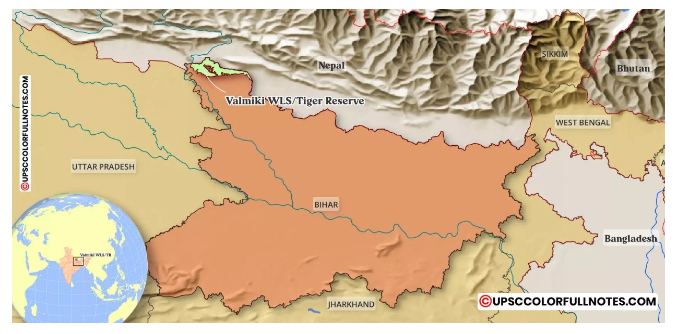
Why the Surge in Tiger Numbers at VTR?
- The complete prohibition of sand and stone mining within VTR, coupled with stringent restrictions on mining in its eco-sensitive zone, has led to an expansion of grassland cover.
- This growth in grassland contributes to the support of prey populations, consequently enhancing the survival prospects of carnivores.
- The reserve is dedicated to managing and nurturing the tiger population by increasing awareness among local residents and closely monitoring mining activities in the vicinity to minimize human-wildlife conflicts.
- As a result, the NTCA has categorized the reserve as 'Very Good.'
Key Details about Valmiki Tiger Reserve (VTR)
- Valmiki Tiger Reserve (VTR) stands as Bihar's sole tiger reserve, situated at the easternmost extent of the Himalayan Terai forests in India.
- Positioned in Bihar's West Champaran district, it shares borders with Nepal to the north and Uttar Pradesh to the west.
- The reserve, situated in the Gangetic plains bio-geographic region, features a blend of Bhabar and Terai region vegetation.
- According to the Forest Survey of India Report 2021, 85.71% of its total area is under forest cover.
- Noteworthy wild mammals within the reserve include tigers, sloth bears, leopards, wild dogs, bison, and wild boars.
- Several rivers, including Gandak, Pandai, Manor, Harha, Masan, and Bhapsa, flow through various parts of the reserve.
Insights into the National Tiger Conservation Authority (NTCA)
- Overview
- The National Tiger Conservation Authority (NTCA) operates as a statutory body under the Ministry of Environment, Forests, and Climate Change.
- Established in 2005 based on the recommendations of the Tiger Task Force, it derives its authority from the Wildlife (Protection) Act, 1972, amended in 2006.
- Objectives
- Granting statutory authority to Project Tiger for legal compliance of its directives.
- Enhancing accountability of the Center and States in managing Tiger Reserves through MoU agreements.
- Providing oversight by Parliament.
- Addressing the livelihood interests of local communities surrounding Tiger Reserves within the federal structure.
|
UPSC Previous Year Questions Prelims (2012) Q. Consider the following protected areas:
Which of the above are declared Tiger Reserves? (a) 1 and 2 only Ans: (b) Prelims (2017) Q2. From the ecological point of view, which one of the following assumes importance in being a good link between the Eastern Ghats and the Western Ghats? (a) Sathyamangalam Tiger Reserve Ans: (a) |
Source: DTE
The Central Water Commission (CWC)
In News: The Kerala state government has pressed the Centre to expedite the construction of a new dam at Mullaperiyar in Idukki district during a recent meeting with the Central Water Commission.
About The Central Water Commission (CWC)
- The Central Water Commission (CWC) is a leading technical organization in India focused on water resources.
- Operating under the Ministry of Jal Shakti, Department of Water Resources, River Development, and Ganga Rejuvenation, Government of India, it initiates, coordinates, and advances schemes for water resource control, conservation, and utilization across the country.
- This includes responsibilities in Flood Control, Irrigation, Navigation, Drinking Water Supply, and Water Power Development.
- The Commission, led by a Chairman with the status of Ex-Officio Secretary to the Government of India, is organized into three wings: Designs and Research (D&R) Wing, River Management (RM) Wing, and Water Planning and Projects (WP&P) Wing.
- Each wing is overseen by a full-time member with the status of Ex-Officio Additional Secretary to the Government of India. The headquarters is located in New Delhi.
Source: TH
Chronic Wasting Disease (CWD) - Edukemy Current Affairs
In News: In a worrisome development, scientists are raising concerns about the possible transmission of a condition called chronic wasting disease (CWD) from animals to humans
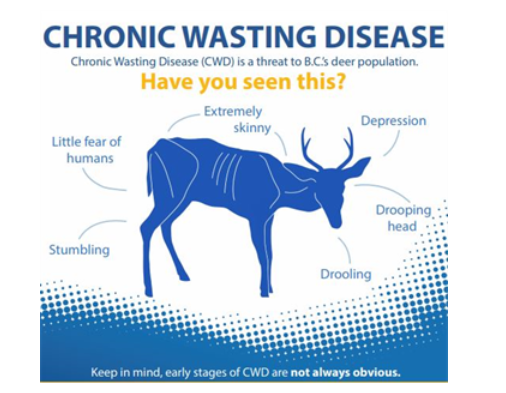
About Chronic Wasting Disease (CWD)
- Chronic Wasting Disease (CWD), also known as Zombie deer disease, is a neurological disorder that impacts deer and other cervids, characterized by the abnormal growth of a misfolded protein known as a prion.
- This prion induces healthy brain proteins to become abnormal, resulting in a spectrum of symptoms.
- CWD is contagious and can spread within cervid populations through direct animal-to-animal contact or indirectly through exposure to contaminated objects or environments, including saliva, urine, feces, and carcasses of infected animals.
- Symptoms may take over a year to manifest and include significant weight loss, stumbling, listlessness, and other neurological issues.
- CWD is alarming due to its potential transmission to both animals and humans, raising concerns about consuming infected meat.
- It can affect animals of all ages, and some infected animals may perish without displaying symptoms.
- Unfortunately, CWD is fatal to animals, and there are currently no treatments or vaccines available.
Source: FE
Black-necked Grebe - Edukemy Current Affairs
In News: In a noteworthy environmental occurrence, a Black-necked Grebe was observed at Hokersar wetland for the first time recently.
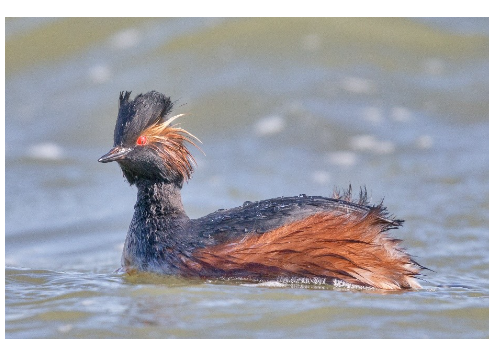
About Black-necked Grebe
- Overview
- The black-necked grebe, scientifically known as Podiceps nigricollis, belongs to the grebe family of water birds.
- Distribution
- It boasts a widespread breeding range, with migratory populations spanning Eurasia and North America, complemented by a resident population in subtropical Africa.
- Features
- Length: Typically measures between 28 and 34 centimeters.
- Weight: Weighs between 265 and 450 grams.
- Wingspan: Ranges from 20.5 to 21.6 inches (52-55 cm).
- Breeding Plumage: Displays ochre-colored plumage behind the eye and over the ear coverts, with the upper parts, head, neck, and breast in black to blackish brown.
- Non-breeding Plumage: Exhibits greyish-black upper parts, and dark greenish-grey legs. Both sexes are similar.
- Behavior and Diet
- Utilizes various foraging techniques, capturing insects on the water surface or in flight.
- Despite a general aversion to flight, it covers distances up to 6,000 kilometers (3,700 mi) during migration.
- Conservation Status
- IUCN Status: Least Concern.
Key Facts about Hokersar Wetland
- Known as the ‘Queen Wetland of Kashmir,’ Hokersar (or Hokera) is a Ramsar site situated in Srinagar, Jammu and Kashmir.
- Covering 13.75 sq. km (1375 ha) in the northwest Himalayan Biogeographic province of Kashmir, it is a perennial wetland fed by the Doodhganga River, a tributary of Jhelum.
- With an altitude of 1584 m, it holds the distinction of being the only site with remaining reed beds in Jammu and Kashmir.
- Hokersar is home to 68 waterfowl species, including the Large Egret, Great Crested Grebe, Little Cormorant, Common Shelduck, Tufted Duck, and the endangered White-eyed Pochard, migrating from Siberia, China, Central Asia, and Northern Europe.
Source: RK
Pterosaur - Edukemy Current Affairs
In News: Chinese and Brazilian paleontologists have recently discovered and identified a new species of chaoyangopterid pterosaur.
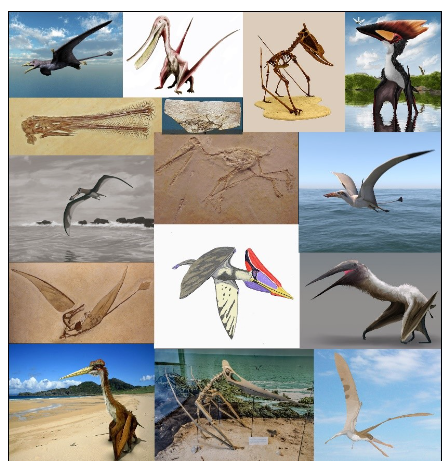
About Pterosaurs
- Overview
- A pterosaur refers to any flying reptile that thrived across all periods (Triassic, Jurassic, and Cretaceous) of the Mesozoic Era (252.2 million to 66 million years ago).
- Distinctive Characteristics
- While not classified as dinosaurs, pterosaurs, like dinosaurs, are archosaurs, or "ruling reptiles," a group that also includes birds and crocodiles.
- Pterosaurs were pioneers in powered flight, evolving the ability to flap their wings for sustained flight, distinguishing them from creatures that merely leaped or glided.
- They marked the first vertebrates capable of flight and included the largest flying vertebrate ever known, the late Cretaceous Quetzalcoatlus.
- Flight Evolution
- Pterosaurs achieved flight independently of birds and bats, showcasing a notable example of convergent evolution.
- Their wings featured a sophisticated membrane of skin extending from the thorax to an elongated fourth finger.
- Extinction
- Pterosaurs faced extinction at the conclusion of the Cretaceous period, approximately 65.5 million years ago, coinciding with the mass extinction event known as the Cretaceous-Tertiary extinction event (K-T extinction event).
Source: SN
Evaluating Make in India: Successes and Obstacles
In News: The article examines the Make in India policy and its limitations, emphasizing the necessity for an Industrial Policy to address the unmet objective of job creation.
What is the Make in India Policy?
- The Make in India initiative, launched by the Indian government in 2014, aims to elevate domestic manufacturing and position India as a global manufacturing hub.
- The program focuses on attracting investment, fostering innovation, skill development, protecting intellectual property, and building top-notch manufacturing infrastructure.
Objectives
- Increase the manufacturing sector's growth rate to 12-14% per annum.
- Generate 100 million additional manufacturing jobs by 2025.
- Raise the manufacturing sector's contribution to GDP to 25% by 2025.
Strategies
- Streamlining Business Processes: Simplifying regulations to ease doing business in India.
- Developing Infrastructure: Upgrading ports, roads, railways, and power generation.
- Skilling the Workforce: Investing in skill development for the manufacturing sector.
- Incentivizing Investments: Providing tax breaks, subsidies, and incentives.
- Focusing on Key Sectors: Targeting specific sectors for development.
Derivatives
Make in India has derivatives like Made in India and Make for India, promoting products assembled or produced in India and manufacturing for the domestic market, respectively.
Rationale behind the Introduction of MII
- Launched in 2014, Make in India aimed to overcome constraints in the manufacturing sector, including inadequate infrastructure, regulatory complexities, and a shortage of skilled manpower.
- Its primary goals were to increase manufacturing's GDP contribution to at least 25% and create 100 million additional jobs.
Success and Failures of MII
Successes
- Improved ranking in the World Bank's Ease of Doing Business Index.
- Opened up various sectors to private and foreign investment.
- Growth observed in sectors like automobiles, electronics, and renewable energy.
- Leadership in mobile phone manufacturing.
Failures
- Failure to create an international niche market.
- Unmet targets for manufacturing sector share in GDP, job creation, and growth rate.
- Challenges including policy paralysis, lack of competitive advantage, and infrastructure bottlenecks.
Why did MII Fail to Achieve its Objectives?
- While the production-linked incentive (PLI) scheme aimed to attract investments and enhance efficiency, the primary goal of creating jobs, particularly in labor-intensive manufacturing, remained unaccomplished.
Can the MSMEs Solve the Jobs Conundrum?
- India's vast majority of micro, small, and medium enterprises (MSMEs) in the unorganized sector lack the flexibility for substantial job creation, pointing towards the need for a National Industrial Policy.
What Needs to be Done for Job Creation?
- A comprehensive National Industrial Policy is essential, especially for sectors like toys, garments, and footwear, to supplement the production-linked incentive (PLI) in promoting high-end manufacturing and mass job creation.
How can National Industrial Policy help in Job Creation?
- Providing incentives for industries to expand production, exports, and innovation.
- Developing infrastructure to facilitate efficient movement of goods and services.
- Enhancing workforce skills through education and training programs.
- Promoting entrepreneurship and innovation for startup growth.
- Aligning industrial policy with social and environmental goals.
Conclusion
A National Industrial Policy is crucial to generating productive employment opportunities in India, but the awaited new industrial policy (NIP '23) is currently on hold.
|
UPSC Previous Year Questions Mains (2017) Q. “Industrial growth rate has lagged behind in the overall growth of Gross-Domestic-Product (GDP) in the post-reform period.” Give reasons. How far are the recent changes in Industrial-Policy capable of increasing the industrial growth rate? |
Source: IE
Share the article
Edukemy’s Current Affairs Quiz is published with multiple choice questions for UPSC exams
MCQ
Get Latest Updates on Offers, Event dates, and free Mentorship sessions.

Get in touch with our Expert Academic Counsellors 👋
FAQs
UPSC Daily Current Affairs focuses on learning current events on a daily basis. An aspirant needs to study regular and updated information about current events, news, and relevant topics that are important for UPSC aspirants. It covers national and international affairs, government policies, socio-economic issues, science and technology advancements, and more.
UPSC Daily Current Affairs provides aspirants with a concise and comprehensive overview of the latest happenings and developments across various fields. It helps aspirants stay updated with current affairs and provides them with valuable insights and analysis, which are essential for answering questions in the UPSC examinations. It enhances their knowledge, analytical skills, and ability to connect current affairs with the UPSC syllabus.
UPSC Daily Current Affairs covers a wide range of topics, including politics, economics, science and technology, environment, social issues, governance, international relations, and more. It offers news summaries, in-depth analyses, editorials, opinion pieces, and relevant study materials. It also provides practice questions and quizzes to help aspirants test their understanding of current affairs.
Edukemy's UPSC Daily Current Affairs can be accessed through:
- UPSC Daily Current Affairs can be accessed through Current Affairs tab at the top of the Main Page of Edukemy.
- Edukemy Mobile app: The Daily Current Affairs can also be access through Edukemy Mobile App.
- Social media: Follow Edukemy’s official social media accounts or pages that provide UPSC Daily Current Affairs updates, including Facebook, Twitter, or Telegram channels.


